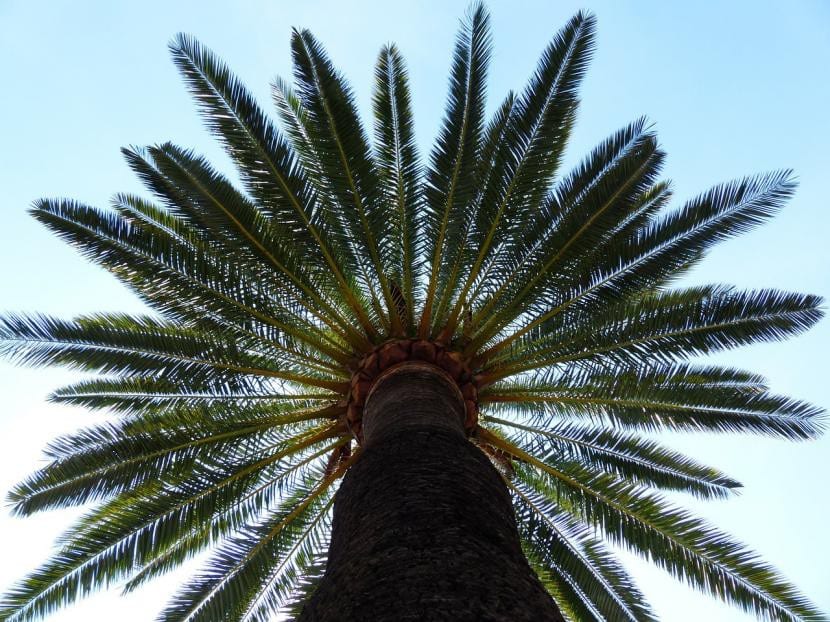
Palm trees are plants that decorate many of the streets, avenues and parks of practically the entire Spanish territory. They are so elegant, that it is difficult to avoid the temptation to plant them, since we also do not have to worry about the pipes because their root system does not have the strength to break them.
But What types of palm trees can we find in Spain? What are the most common and why?
Native palm trees
Chamaerops humilis or Palmito
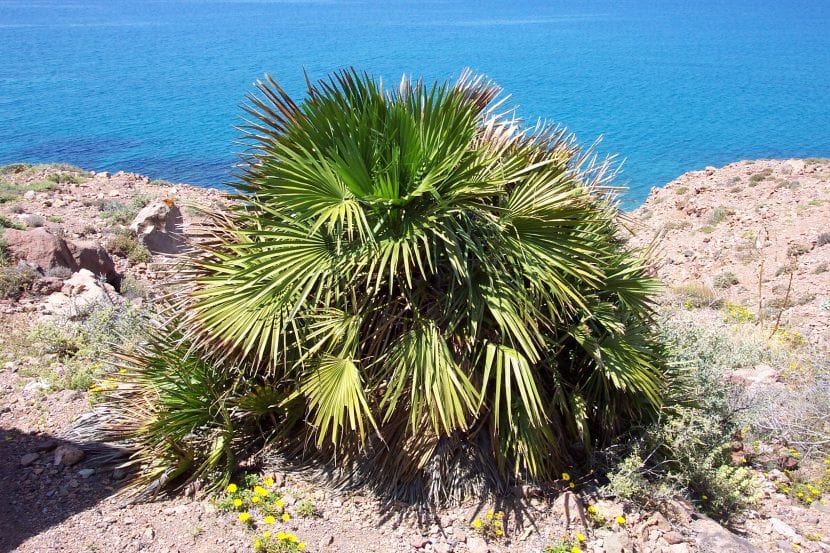
El palmetto, whose scientific name is Chamaerops humilis, is the only autochthonous palm of the Balearic Islands. It grows naturally in the Sierra de Tramuntana (north of the island of Mallorca), from where it is native, but also in Andalusia, Murcia, the Valencian Community, and in the Sierra de Cabo de Gata (Almería). It is a multicaule species, that is, it has several trunks, which reach a maximum height of 4 meters.
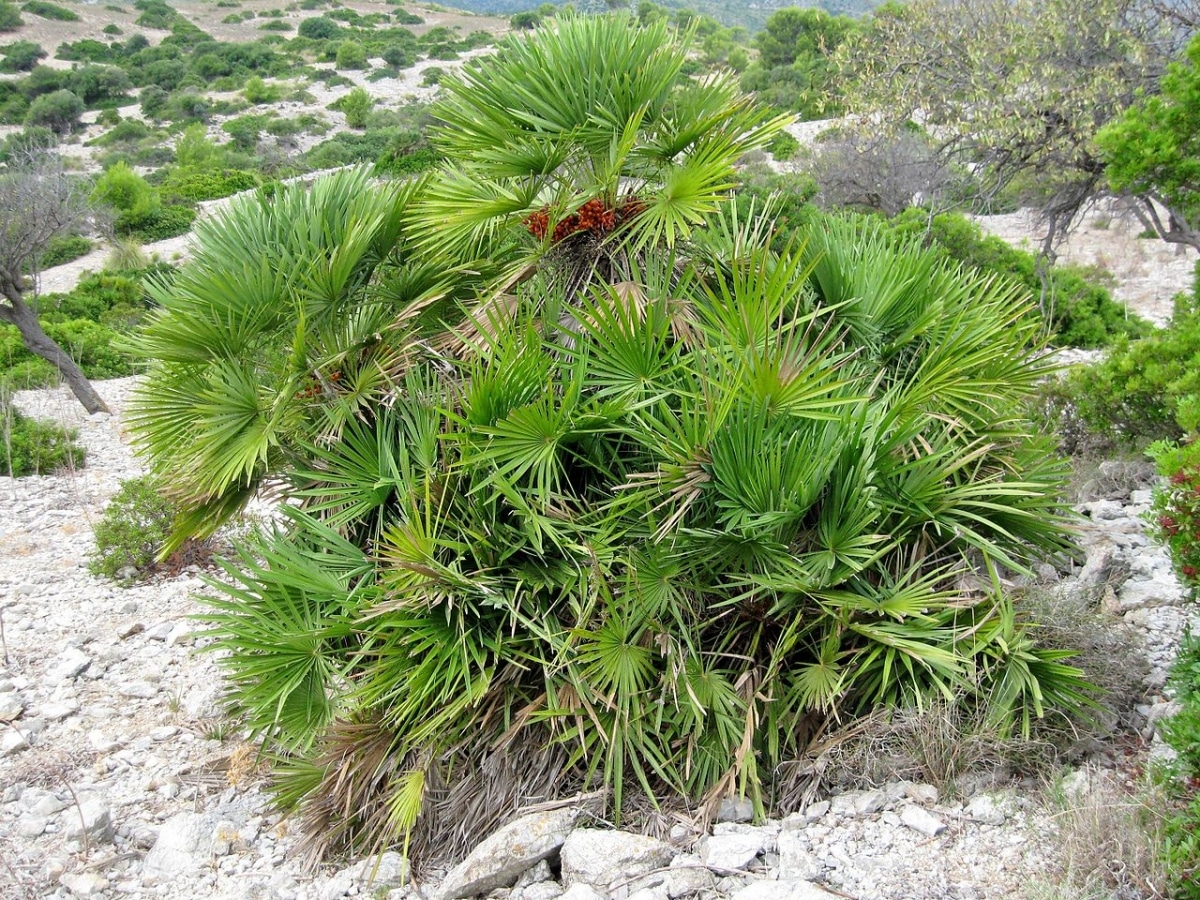
It is very resistant to drought, being able to survive with 350mm of water per year, and frosts down to -10ºC. What's more, the fruits are used as astringents and as antidiarrheals. But not only that: the fibers of the leaves are used to make brooms, ropes and mats.
Phoenix canariensis or Canary Island Palm
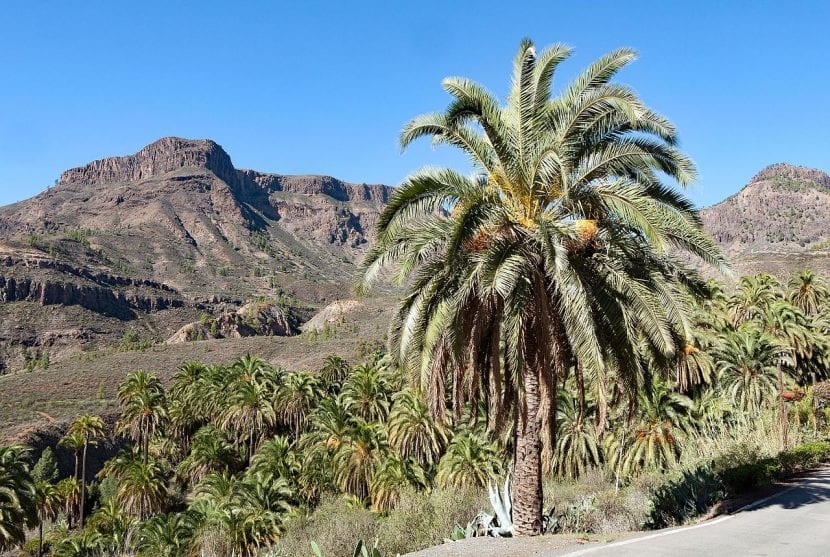
La Canary Island Palm, whose scientific name is Phoenix canariensis, is an endemic species of the Canary Islands, where it is a protected plant. It is a plant of singular beauty, with pinnate green leaves that reach a length of up to seven meters, crowning a single stipe (trunk) which can measure up to 15m.
It is an extraordinary plant that can grow even in the most affected soils, fixing the earth to the ground thus preventing it from eroding further. In their place of origin, they produce a thousand palms with the sap, and the leaves are used as brooms. It resists without problems the frosts of until the -10ºC.
Allochthonous palm trees widely cultivated in Spain
Phoenix dacylifera or Datilera
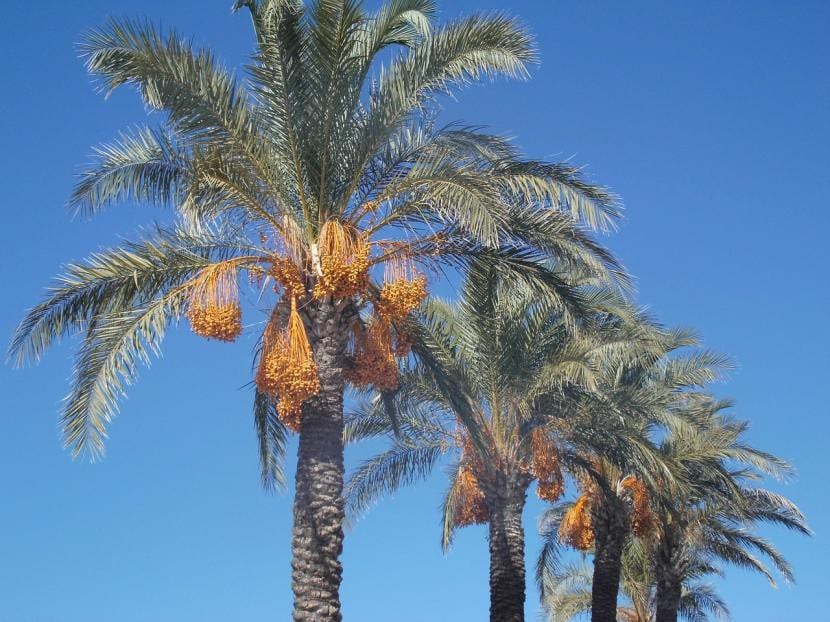
La date palm, whose scientific name is Phoenix dactylifera, is a plant native to Southwest Asia. It is a usually multicaule palm that has bluish-glaucous pinnate leaves up to 5 meters in length. The trunk reaches a height of up to 30 meters.
It is a plant that we can frequently see in the streets and gardens, not only for its ornamental value, but also for its resistance to drought and its use, which is as follows:
- The fruits, the dates, are edible.
- The leaves are used to make baskets, fans, mats, fishing floats.
- The flower buds are eaten in salads.
And, the most interesting: it resists frosts down to -6ºC.
Trachycarpus fortunei or Raised Palmito
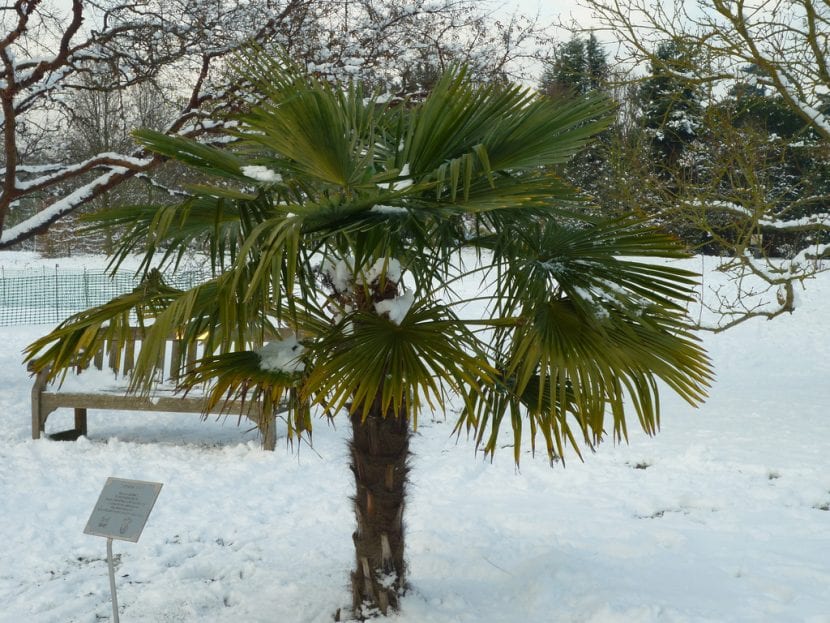
El Raised palm o Palmera excelsa, whose scientific name is Trachycarpus fortunei, is a plant that is grown even in the coldest regions. Originally from China, With its 12 meters high and with a trunk no more than 40cm in diameter, it is perfect for planting in small plots.
It resists high temperatures, drought and frosts down to -15ºC.
Washingtonia will spin

La Washingtonia will spin It is native to California and Baja California, where it lives in sub-desert areas. It is a very fast growing plant, growing 50cm per year. Its trunk is thick, up to almost 1m in diameter, and up to 15m tall.
It is a species that likes hot summers; however, strong frosts hurt it. For this reason, it can only be grown outdoors if the temperature does not drop below -10ºC.
Robust Washingtonia

La Robust Washingtonia It is native to the south of the Baja California peninsula. Grows to a height of up to 35 meters, with a thin trunk up to 60cm in diameter. It is often confused with the W. filifera, but the latter has a much thicker trunk, but like her, it has a very fast growth rate.
It resists hot summers and frosts down to -6ºC.
These are the palm trees that we can see most often in Spain. We hope that now it will be easier for you to identify them.